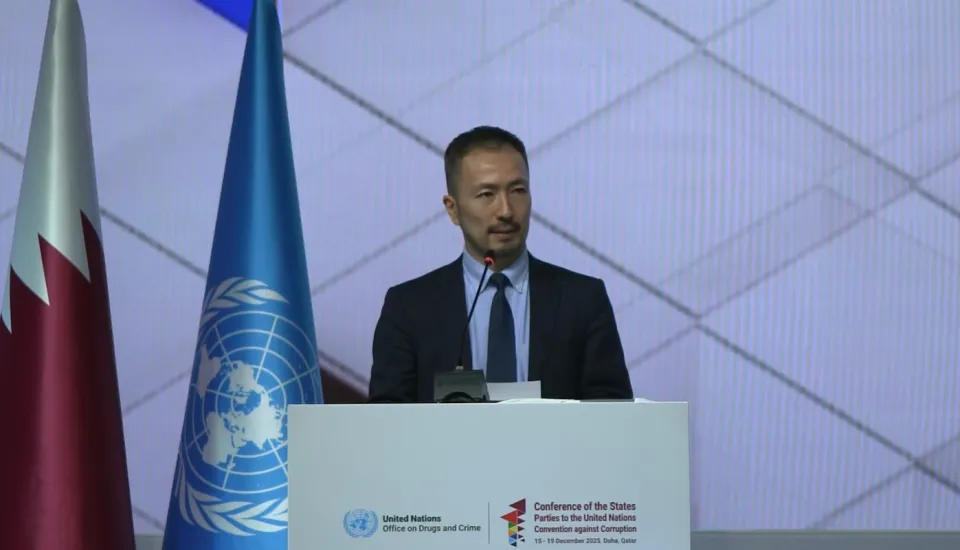Analysis of Mexican elections - Mexico City, June 7
As often in Mexico critical elections are more common than normal elections. Surprisingly, Sunday’s elections took on an extraordinary importance and meaning for a midterm election in which the presidency is not up for grabs. The exceptional nature of what happened at the polls in Mexico on Sunday has to do with the voters’ movement, with what was at stake in the election and the implications of the outcome.
I understand that a critical election — as per definition — is a process in which there is a massive shift in the vote from one political force to another, changing the patterns of electoral behavior and the distribution of power. I would add that it is also defined by the scope of its consequences, which is determined by the key issues in the election or the positions that are at play.
For example, the 1988 presidential election in Mexico was critical, though we only became aware of it a few weeks before the fact, for two reasons. Firstly, it saw the massive shift in the vote from the PRI to the Frente Democrático Nacional, the leftist opposition, which did not even exist before 1987. This nonetheless shook the hegemony of that party. Secondly, its candidate did not reach the presidency, but in the wake of that mobilization the Partido de la Revolución Democrática (PRD) rose up, deepening the transformation of the political party regime and accelerating the democratic transition.
The 1994 presidential election was also critical in view of the appearance of political violence, which was massively repudiated, as suggested by a participation rate of more than 74 percent. In 2000, the election was critical because it saw the defeat of the PRI candidate for the presidency, which for many was the confirmation of the transition to democracy.
In 2006, the election was critical because the mobilization rejecting the official results, which gave the triumph to the presidential candidate for the Partido Acción Nacional (PAN), Felipe Calderón, by at least one percent over the contender for the PRD, Andrés Manuel López Obrador. This put the institutional framework that has been at the center of a new party system to the test.
Sunday’s election had not been anticipated to be critical because it was not a presidential election; usually the presidential elections bring many more voters to the polls than the midterm elections for the chamber of deputies, the lower house of the national Congress. Normally, the midterm contest gets less attention, and the participation and interest of the electorate is diminished. Nonetheless, on this occasion the election took on a critical dimension due to the context of violence in which it unfolded and due to the deterioration of the image of President Peña Nieto and his administration, but above all, due to the reaction of the voters who went to cast their ballots in numbers that defied all predictions and expectations.
Two distinct factors, albeit both associated with violence, made the context in which the election was held especially complex: first, intensified pressure by organized crime on the political institutions, as shown by the revelation of the ties between elected officials and criminal groups; and second the powerful offensive by the Coordinadora Nacional de Trabajadores de la Educación (CNTE), a radical organization of unionized teachers, which in recent weeks demanded the elections be suspended to protest an educational reform that introduces compulsory evaluation of teachers’ job performance. Days before the election, teachers from the CNTE destroyed election materials, blocked offices of the National Election Institute (INE), attacked the local headquarters of different parties, and announced that they might impede voters’ access to the polls. Their actions were concentrated in the states of Michoacán, Guerrero, and Chiapas but, they were sufficiently aggressive and clumsy to generate a climate of distrust and fear that could have kept voters away.
At this time, the president’s approval rating is near 40%, and the government has poor credibility. The elections were preceded, first, by the tragedy of Ayotzinapa, which brutally took the lives of 43 young students. News of the tragedy, which has yet to be clarified in a satisfactory manner, horrified the public and was followed by the corruption scandals that involved President Enrique Peña Nieto, his wife, and Finance Minister Luis Videgaray. If we add to all this, the mounting frustration with mediocre results in the economy, we would grasp the set of circumstances that have given rise to tensions which would inevitably have an impact on the worth and meaning of the election.
The first measure of the importance of these elections was the fear of abstentionism expressed, above all, by the opposition forces. For that reason, all the parties — some more insistently than others — set in motion campaigns to obtain votes to counter the insidious effect of the fear of violence, but also to counter the movements of opinion against the vote or in favor of a null ballot, both meaning to express a generalized repudiation.
The CNTE’s strategy of taking the election hostage also shows how important elections have become for us Mexicans. The trend in Mexico was clearly adverse to the vote. There were many debates — some very well thought out — as to whether voting was worthwhile. So the first surprise from the voters was their participation at the polls. The opinion polls anticipated a 34% turnout, so the 48% reported by the press was an unexpected gift for those who defend their commitment to Mexico’s battered democracy. The percentage of voter turnout is an expression of faith in the vote and in political pluralism.
The June 7 elections were also critical because the results show that we believe in the strength of the vote as an instrument of change. Contrary to what was preached – or is being preached by those who feel disenchanted — Sunday’s vote provided evidence of its transformative capacity, as indicated by the triumph of the Movimiento de Regeneración Nacional (Morena), which broke away from the Partido de la Revolución Democrática (PRD). The victory of the independent candidates, one of whom won the race for governor of the state of Nuevo León, one of Mexico’s richest, and another in Jalisco.
The growth of small parties such as Movimiento Ciudadano, the defeat of the PRD in Mexico City and of the PAN in Michoacán, as well as the limited vote expected to be won by the Partido de la Revolución Institucional (PRI) are some of the results that change the political landscape. From now on, it will be necessary to take into account the regional distribution of political forces calling for autonomy vis-à-vis the central authorities, as suggested by the triumph of the independents: the candidate for governor of Nuevo León, Jaime Rodríguez, and two running for seats in the lower house of the national Congress, Manuel Clouthier in Sinaloa and Pedro Kumamoto in Jalisco.
What appears to be the new distribution of political forces in the country requires that the government rethinks its strategy. If its triumph in 2012 led it to believe that it could restore the PRI of the past, its methods and its tricks, the meager results it obtained on June 7 have put it on the defensive. In the new legislature, it will most likely have a simple majority, in an alliance with the now-haughty Partido Verde Ecologista de México, and will have to deal with them in new terms, as Partido Verde Ecologista de México’s leader Arturo Escobar. Everything indicates that, in this new legislature, the PRI government will be struggling, first, for its survival, and then – well we’ll see. It may well be that the June 7, 2015 election will be seen in the future as a surprising watershed moment.




